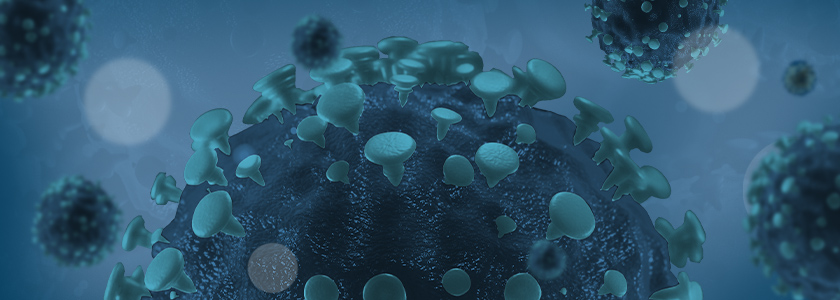How long is the coronavirus dangerous?

The novel coronavirus, SARS-CoV-2, spread around the globe in a matter of weeks, becoming a life-changing pandemic that at one point had an estimated one-quarter of the world’s population in quarantine or isolation.
The virus has an incubation period of up to two weeks and is spread by water droplets which go airborne, wind up on hands, or find safe harbor on surfaces. The persistence of SARS-CoV-2 on inanimate surfaces has emerged as an area of crucial concern for virologists, who have found that the persistence of how this coronavirus behaves is similar to others like the original sever acute respiratory syndrome—SARS—which broke out in 2002. (For a fascinating person-by-person, play-by-play recap of the spread of that disease, read this.)
Stability of the new coronavirus is similar to that of the original SARS, notes the National Institutes of Health. That means it can hang out in aerosols for up to three hours, on copper for four hours, on cardboard for a full day, and on plastic and stainless steel for the better part of a workweek.
“Taken together, our results indicate that aerosol and fomite transmission of HCoV-19 are plausible, as the virus can remain viable in aerosols for multiple hours and on surfaces up to days,” the authors of a recent scientific article on the persistence of the virus wrote. Those researchers also added that SARS-CoV-2, like the original SARS, was capable of generating “superspreading” events, where one person infects a large number of other people. In a separate study, researchers from Germany found similar results, though the German study also estimates persistence time on items like silicon rubber, latex surgical gloves, ceramics, Teflon, and disposable gowns.
As recounted in a letter to the editor of the New England Journal of Medicine, when deployed in aerosol form, “SARS-CoV-2 remained viable in aerosols throughout the duration of our experiment (3 hours),” wrote van Doremalen et al. (2020). “SARS-CoV-2 was more stable on plastic and stainless steel than on copper and cardboard, and viable virus was detected up to 72 hours after application to these surfaces...The longest viability of both viruses was on stainless steel and plastic; the estimated median half-life of SARS-CoV-2 was approximately 5.6 hours on stainless steel and 6.8 hours on plastic.”
On copper, no viable virus was measured after four hours, and it was gone from cardboard within 24 hours.
In a survey of previously-published studies, which appeared in The Journal of Hospital Infection, researchers studied data from the coronaviruses responsible for SARS and MERS and from studies that investigated veterinary coronaviruses. The study found that human coronaviruses can remain infectious from 2 hours to 9 days. At temperatures of around 4°C, or 39.2°F, some coronavirus versions could remain viable for four weeks. At room temperature, a coronavirus responsible for the common cold, HCoV-229E, persisted significantly longer in 50% humidity than 30% humidity.
Airborne transmission is of particular concern with SARS, notes an article in New Scientist. In the 2003 SARS outbreak, the virus spread from an infected man with diarrhea through an apartment complex in Hong Kong with the help of bathroom exhaust fans, a cracked sewer vent pipe, opened bathroom windows, and defective U-traps. In this outbreak, the U.S. Centers for Disease Control found that RNA from the virus was detected in the cabins of people who had vacated the Diamond Princess cruise ship 17 days earlier.
Curious about cleaning away the virus? The Journal of Hospital Infection study added that you can successfully inactivate coronaviruses using hydrogen peroxide at a concentration of 0.5%. Other solutions include 0.1% sodium hypochlorite or 62–71% ethanol for 1 minute, while solutions of a biocide called benzalkonium chloride (often used in hand sanitizers and antiseptic towelettes) had conflicting results and chlorhexidine digluconate (an antibacterial scrub sometimes also present in mouthwashes) was ineffective.
“Although the studies the authors summarize in this review did not investigate COVID-19, they believe that the results are also likely to be relevant to this latest coronavirus,” noted an article in Medical News Today.
Looking for more intel on SARS-CoV-2 disinfecting? The U.S. Environmental Protection Agency has compiled a list of products with claims for use against SARS-CoV-2, along with how long the product must stay in contact with the virus to neutralize it.
